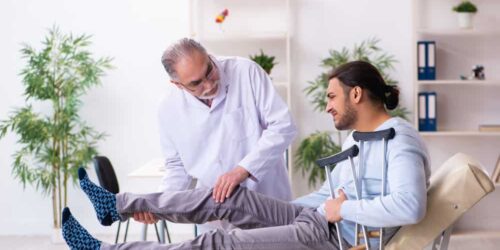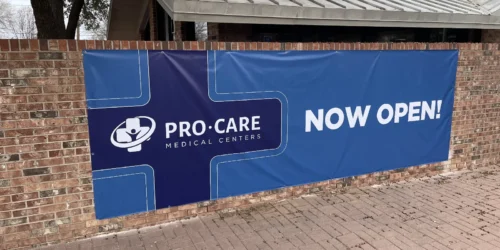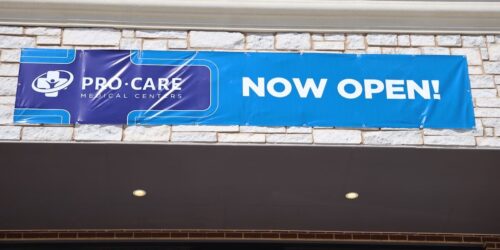Whenever you are experiencing chest pain, it is a cause for concern and important that you seek medical attention right away. Chest pain is more common than you might expect after a car accident. If you have ever experienced chest pains before, then you know how stressful the situation can be. Add to that a recent car accident, and your body is likely flooded with adrenaline and reacting to the latest trauma. All types of chest pain should be taken very seriously because it could be a sign of a medical emergency or serious injury. However, there are many other reasons why you might experience chest pain as a symptom of a car accident injury. Thankfully, your car accident chiropractors are here to help you when you experience chest pain after an accident.
How a Car Accident Can Lead to Chest Pain
Both the driver and passenger sit close to the steering wheel and dashboard. Seat belts and airbags are designed to help prevent major trauma or ejection from the vehicle in the event of an accident, but they can also contribute to injuries and symptoms like chest pain. When the sudden force of impact of an accident occurs, it can throw your body forward so that you strain against the seat belt. If the airbag deploys, then the jolt forward followed by the sudden impact of the airbag can put a significant amount of pressure on your upper body. In the event that a seat belt or airbag doesn’t protect you, you are also at risk of striking the steering wheel or dashboard with part of your upper body when thrown forward by the sudden crash.
Reasons Why You May Be Experiencing Chest Pain
There are many reasons why you might experience chest pain after a car accident. A heart attack is perhaps the most obvious explanation for chest pain. A traumatic event like a car accident could trigger a heart attack during or immediately following the wreck. Initial signs of a heart attack can include pain in your chest, difficulty breathing, nausea, or a sensation like indigestion. However, chest pain is also a relatively common symptom of other accident injuries. Here are three examples of car accident chest pain.
Muscle Strain
When the force of impact throws your body forward, the muscles in your chest and upper body may strain against the seat belt, leading to significant pain. You might notice pain that gets worse when moving your chest and upper body, like turning or twisting from side to side. Sometimes raising or lifting the arms can also increase the discomfort of muscle strain in the chest. When muscles are strained, it can also lead to inflammation in the area. Inflammation can make your pain worse and contribute to your chest pain after a car accident.
Bruised Ribs
When worn properly, your seat belt goes across your chest from your shoulder to your hip and along your waist, helping to safely secure your body in the event of a crash. Depending on the force of impact, your seat belt can actually cause bruising on the skin, leaving your chest tender to the touch. In some cases, the seat belt straining against your chest can also lead to bruised ribs, which can cause chest pain. When you have bruised ribs after a car accident, you may experience chest pain and discomfort when taking deep breaths and twisting or turning from side to side.
Fractured Ribs
A more serious injury to the ribs can also occur in a car accident. Fractured ribs refer to broken ribs that can cause a sudden sharp pain followed by debilitating pain and discomfort. Fractured ribs can cause severe tenderness in the area, along with bruising and swelling. People who suffer fractured ribs may experience an increase in pain when taking a breath.
What to Do When You Have Chest Pain After an Accident
While you might be tempted to “tough it out,” you can actually put yourself at greater risk for life-threatening consequences. If paramedics arrive at the scene, you should never decline medical care or delay seeking treatment. Here are the steps to take when you have chest pain after a car accident.
Seek Medical Care Immediately
Time plays a critical role when you are experiencing chest pain. In the event that the chest pain is a sign of something more serious, like a heart attack, then you want to seek medical care as soon as possible. It is better to rule out a serious injury sooner rather than later when that injury can become life-threatening. Paramedics may arrive at the scene of the car accident, and it is important to let them know if you are experiencing any chest pain so they can begin appropriate first aid and get you to the hospital for further evaluation.
Get a Referral for Diagnostic Imaging
Diagnostic imaging and testing can help rule out a heart attack or other life-threatening injuries. These types of diagnostic tools are also beneficial for identifying the source of your pain so that you can get the appropriate treatment and follow-up care. Your doctor may recommend an X-ray or CT scan for clearer images of the affected area and to help your doctor determine the most appropriate course of treatment.
Visit Car Accident Doctor for Treatment
Once your car accident injuries have been diagnosed, you can visit a car accident chiropractor for continued treatment and care. Car accident chiropractors treat a wide range of injuries, including muscle strains, broken bones, spinal injuries, and more. Your chiropractor will develop a plan of care to help resolve your pain and other symptoms so that you can start healing and recovering faster.
Visit Pro-Care Medical Center to find out more about our car accident chiropractors and how you can get started on safe and effective treatment right away. Our team of car accident chiropractors offers an approach to your personalized care with the knowledge and expertise to address a wide range of car accident injuries.



